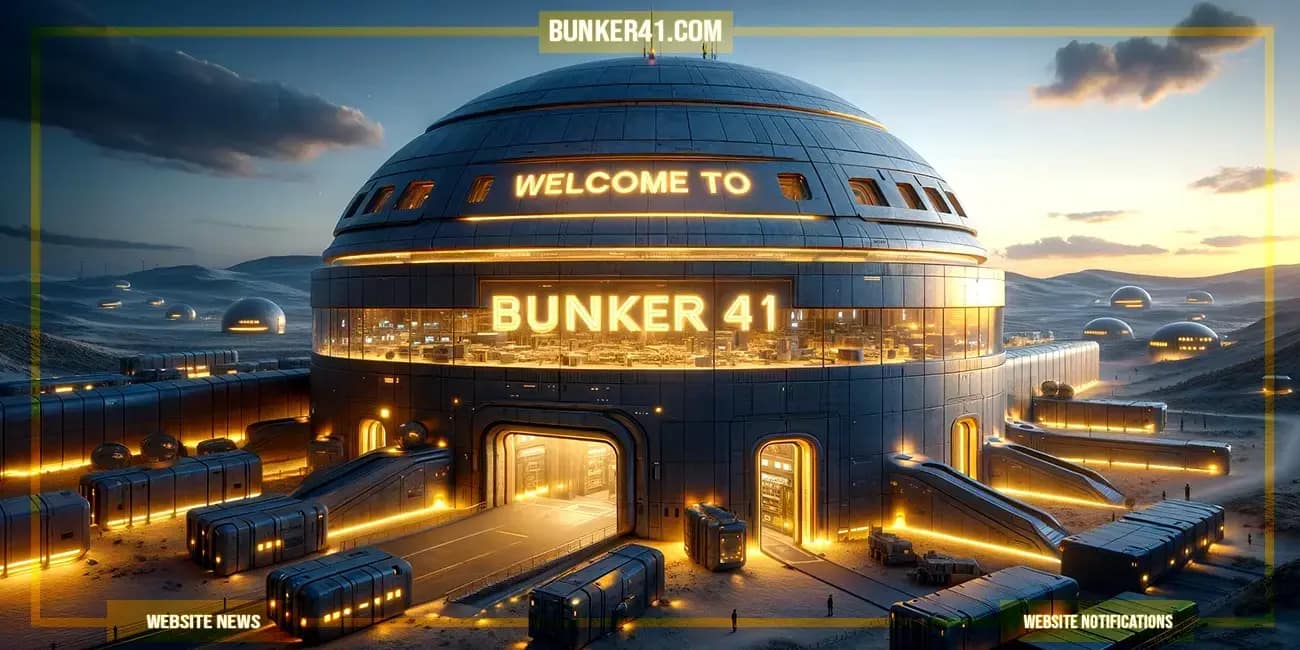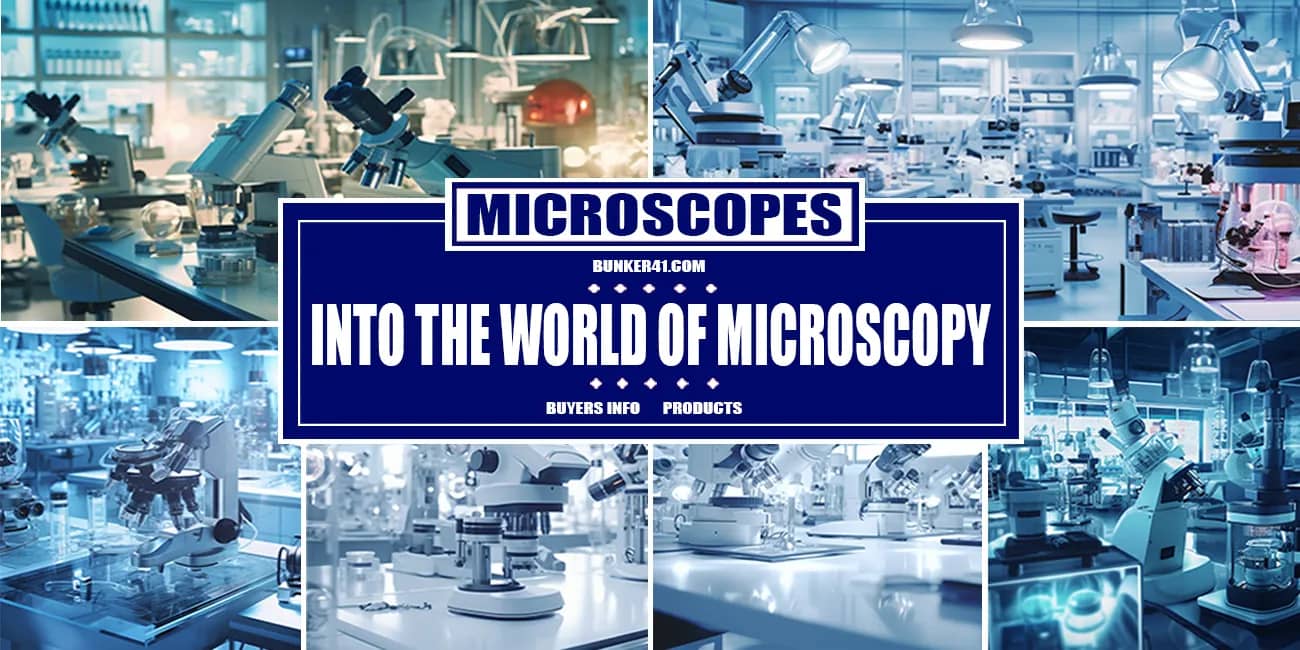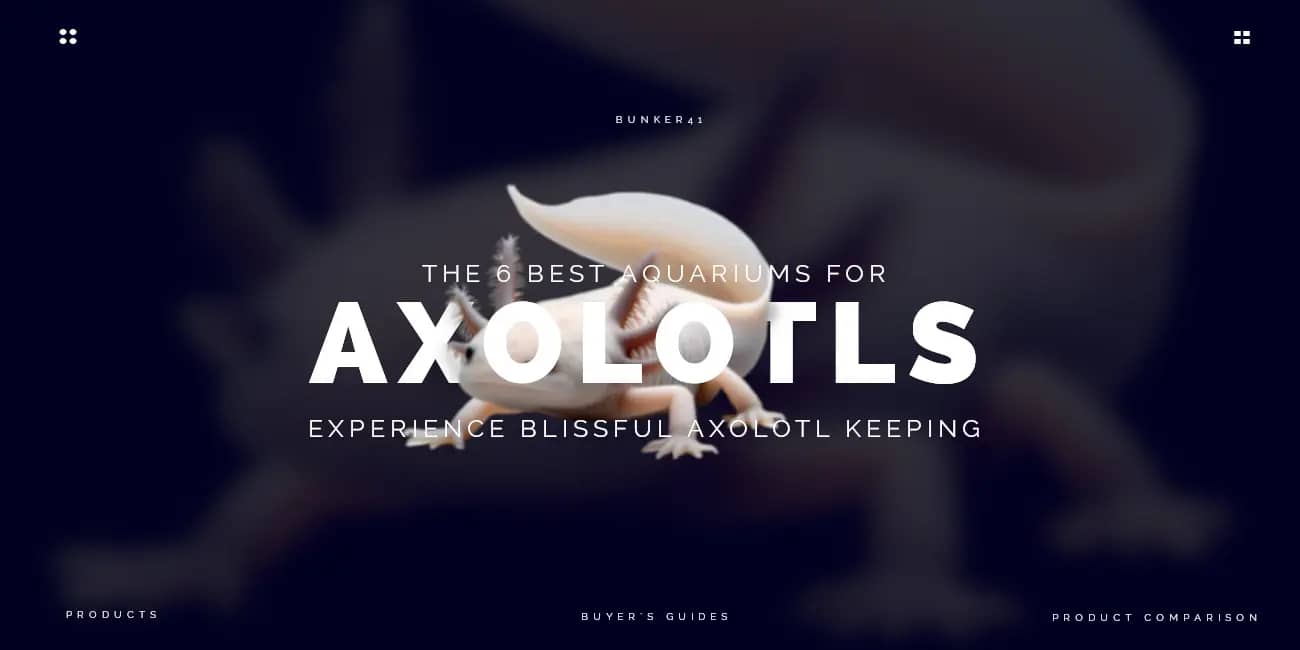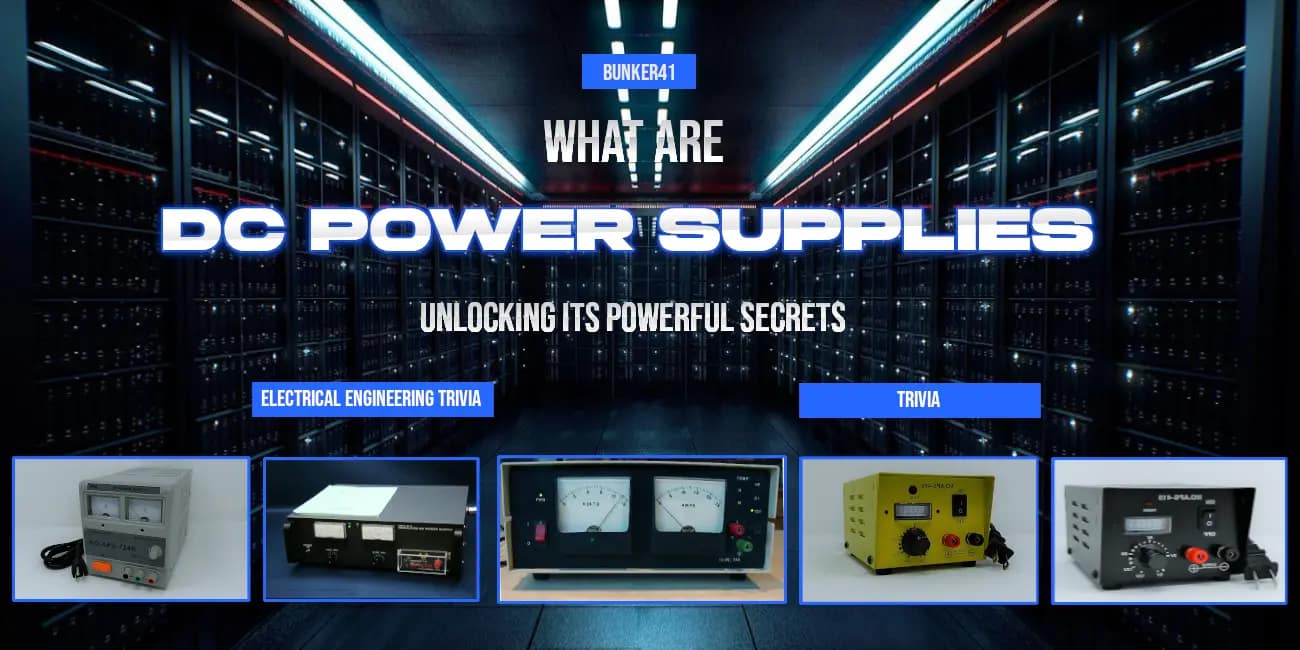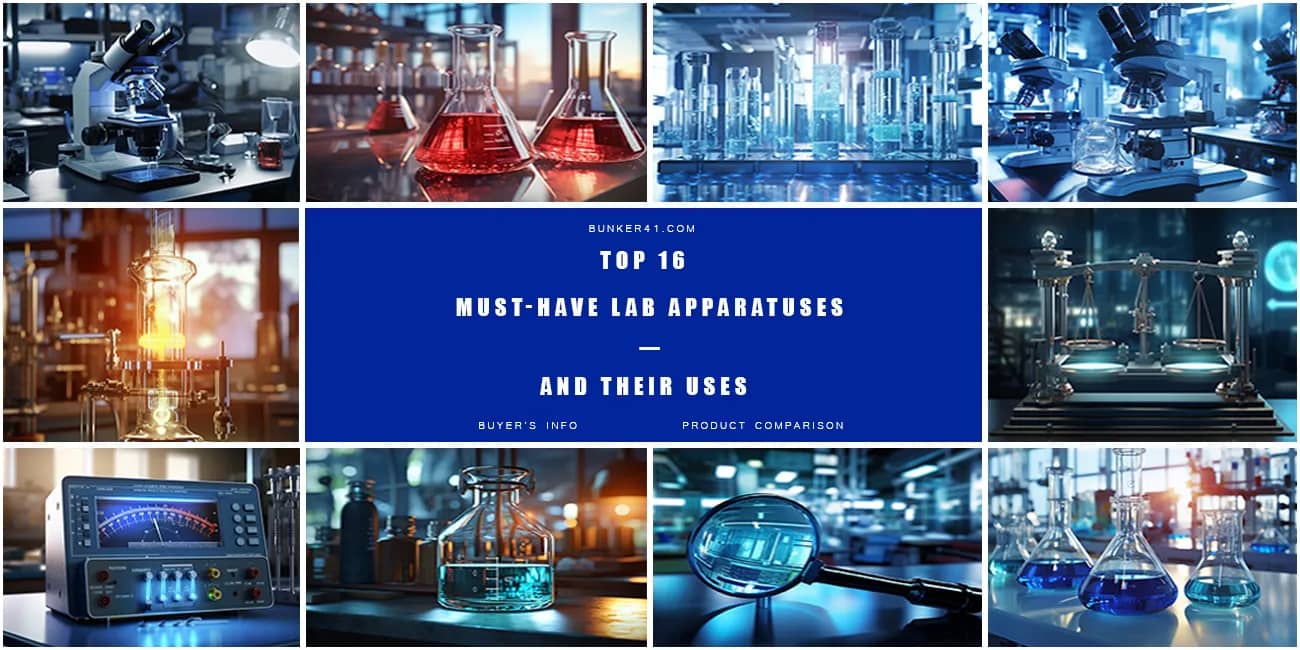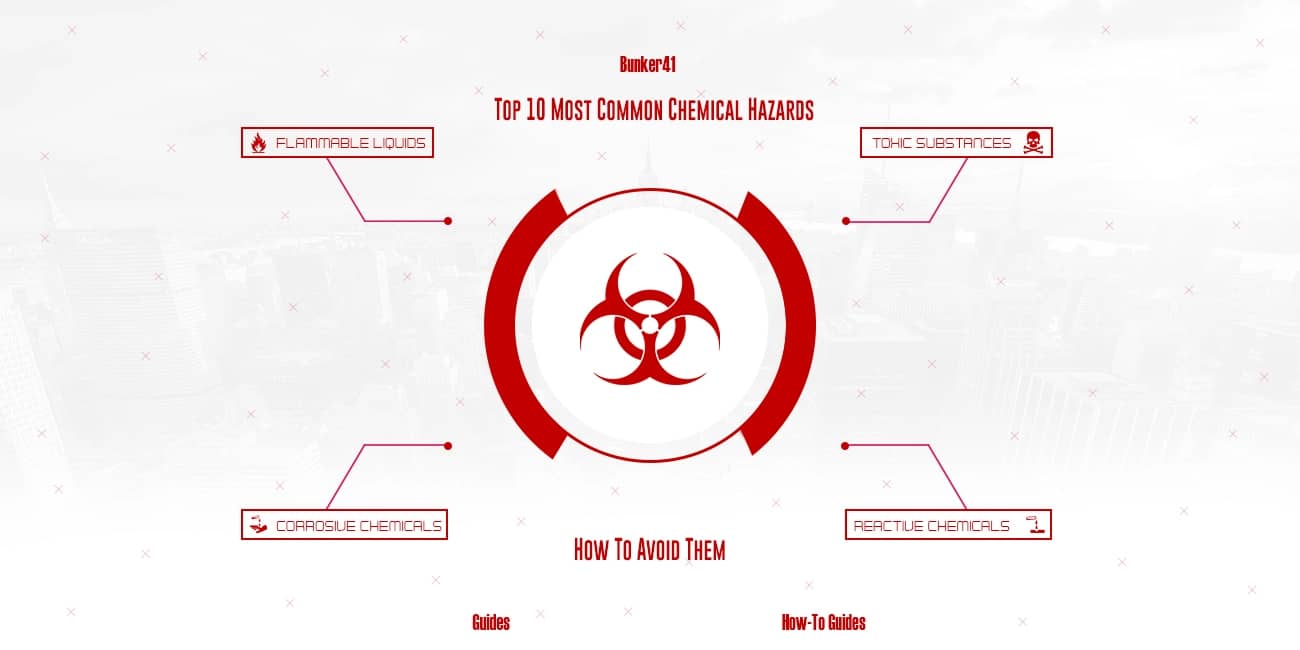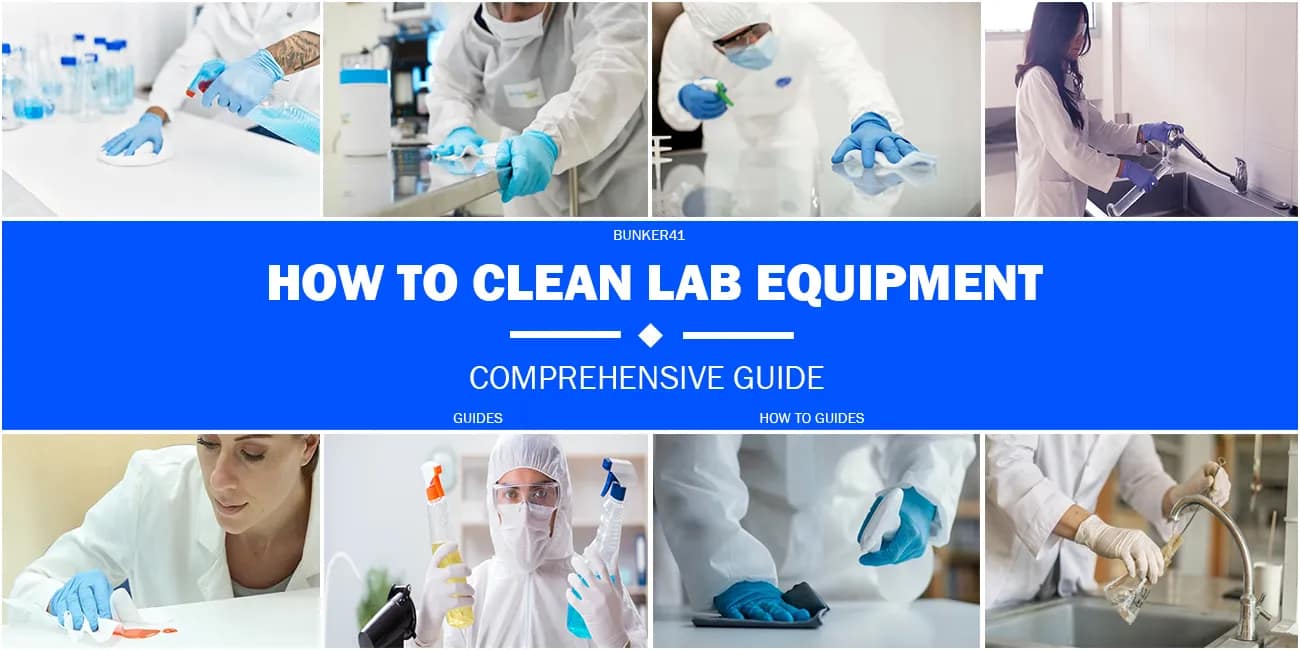Your cart is currently empty!
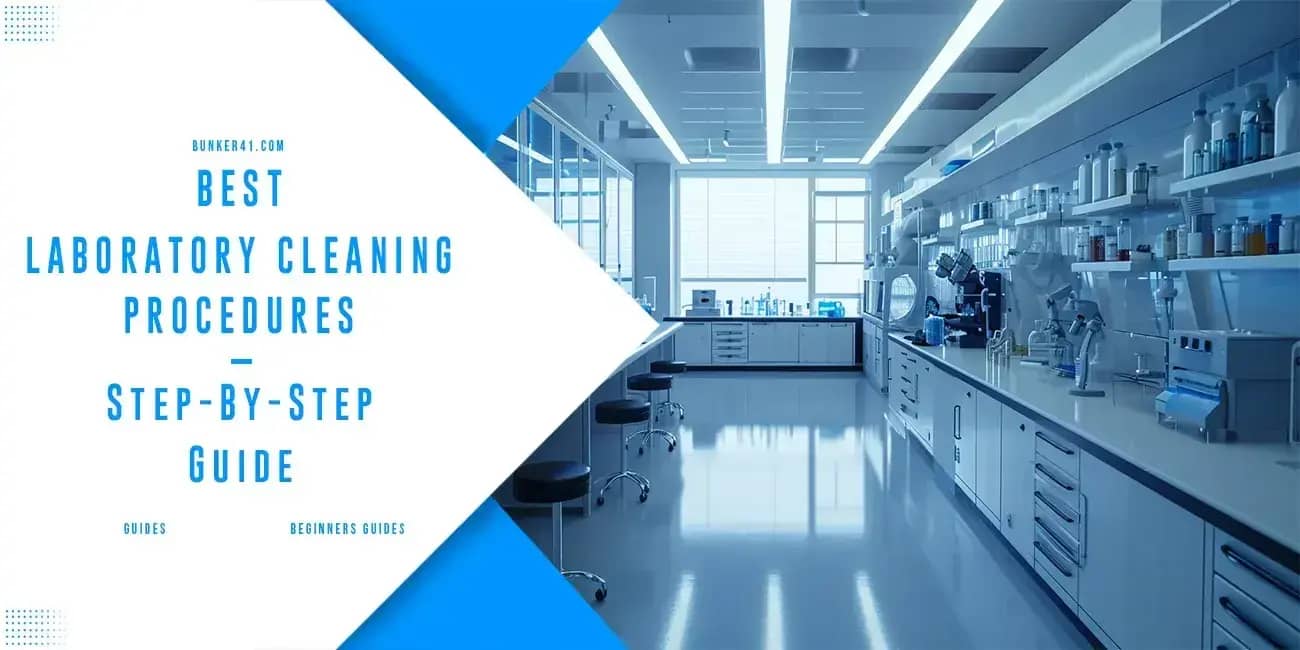
Best Laboratory Cleaning Procedures – Step-By-Step Guide In 2025
Introduction
Did you know that keeping your lab clean can make results up to 25% more accurate? Cleaning in labs is not just about tidiness. It’s crucial for the success of experiments. In 2025, lab cleaning needs to be precise and strategic. Modern equipment and sensitive tools need special cleaning methods. A clean lab ensures better research, longer equipment life, and scientific integrity. Labs are places where tiny dirt can ruin big experiments. Knowing how to clean properly is key for everyone in the lab. It’s about getting the best results and staying safe.

Keeping a laboratory spotless is paramount to ensuring accurate results and maintaining a safe work environment. In this step-by-step guide, we delve into the best laboratory cleaning procedures for 2025, equipping both new and seasoned laboratory personnel with essential knowledge. Laboratory cleaning procedures are vital for preventing cross-contamination, preserving the integrity of lab equipment, and ensuring the safety of laboratory personnel. Utilizing proper cleaning solutions
and methods, such as manual cleaning with soap and water, ultrasonic cleaners for pipette cleaning, and heated rinse cycles in laboratory dishwashers, can significantly reduce the presence of organic contaminants and harmful chemicals. Personal protective equipment (PPE) is non-negotiable when handling certain chemicals and cleaning solutions, safeguarding against potential dangers. Scheduling regular cleaning sessions, including cleaning up hours for frequently used laboratory glassware like
test tubes and Petri dishes, helps prevent residue buildup and the degradation of samples. Implementing a laboratory information management system (LIMS) can streamline the scheduling of cleaning tasks, ensuring all equipment, from reusable pipettes to laboratory dishwashers, is properly cleaned. As we explore these cleaning procedures, we will highlight best practices, such as using deionized water to avoid soap residue, employing direct injection baskets for thorough washes, and the importance of rinsing cycles to prevent spoiled reagents. By adhering to these guidelines, laboratories can
maintain a pristine environment, thus ensuring the reliability of results analysis and the success of future projects.
Key Takeaways
Procedure 1: Daily Cleaning Routine

“A clean laboratory is a safe laboratory”

Establishing a robust daily cleaning routine is the cornerstone of maintaining a pristine and efficient laboratory. This procedure not only ensures that laboratory equipment remains in optimal condition but also safeguards the accuracy of experimental results and the safety of laboratory personnel. Each day, begin by donning the appropriate personal protective equipment (PPE) to protect against exposure to harmful chemicals and cleaning solutions. Start with the manual
cleaning of frequently used laboratory glassware, such as test tubes and Petri dishes, using warm water and soap to remove insoluble organic solutions and other residues. For lab equipment that requires more thorough cleaning, utilize ultrasonic cleaners and laboratory dishwashers equipped with heated rinse cycles to prevent residue buildup and ensure all surfaces are properly cleaned. Scheduling regular cleaning-up hours, managed by a laboratory information management system (LIMS), can help streamline this process and ensure that no equipment is
overlooked. Pay particular attention to pipette cleaning, using direct injection baskets to avoid cross-contamination and spoiled reagents. Additionally, clean the surfaces of medical equipment and laboratory glassware with appropriate cleaning supplies, such as bleach sprays and deionized water, to remove any remaining deposits and prevent soap residue. For more delicate tasks, handheld pipettes and certain chemicals may require specific cleaning procedures to avoid potential dangers. Regularly inspect and replace damaged or highly corrosive components like O-rings and plastic jugs to maintain the integrity of
your labware. By adhering to these best practices, laboratories can prevent degraded samples and ensure a safe, efficient work environment, paving the way for successful future projects.
Essential Steps For Daily Lab Maintenance
Lab workers need a detailed cleaning plan. It should cover many areas of cleanliness. Key spots include:
Quick Cleaning Checklist
Here’s a simple way to clean every day:
| Surface/Item | Cleaning Frequency | Recommended Method |
|---|---|---|
| Desktops and Workbenches | Daily | 70% alcohol wipe |
| Computer Keyboards | Daily | Disinfectant spray with clean cloth |
| Lab Glassware | After each use | Thorough wash and rinse cycles |
| High-Touch Equipment | Multiple times daily | EPA-certified disinfectant |
Pro Tip: Use disinfectants for 5 minutes to kill germs.
Remember: A clean lab is a safe and reliable lab.
Procedure 2: Proper Lab Equipment Cleaning


Ensuring proper lab equipment cleaning is a critical component of any effective laboratory cleaning procedure, integral to maintaining the integrity of experiments and the safety of laboratory personnel. This procedure begins with a thorough understanding of the specific cleaning needs for various types of laboratory equipment, from reusable pipettes to laboratory glassware like test tubes and petri dishes. Each piece of lab equipment requires its own tailored cleaning solution and
method. For example, manual cleaning with soap and warm water is effective for removing insoluble organic solutions from glass surfaces, while ultrasonic cleaners are ideal for delicate items like pipettes, using sound waves to dislodge contaminants without damaging the equipment. Personal protective equipment (PPE) is essential when handling certain chemicals and cleaning solutions, as it protects laboratory personnel from potential dangers posed by harmful chemicals. Utilizing a laboratory information management system (LIMS)
can help in scheduling cleaning tasks, ensuring that all equipment undergoes regular and thorough wash and rinse cycles. This system also aids in organizing clean-up hours, preventing residue buildup and cross-contamination, which can degrade samples and spoil reagents. For larger equipment, such as laboratory dishwashers, it is important to use heated rinse cycles and deionised water to eliminate soap residue and organic contaminants. Direct injection baskets can be used for pipette cleaning, ensuring that even the most difficult-to-clean equipment is properly cleaned. Additionally, regularly replacing damaged
components, such as O-rings and plastic jugs, helps maintain the functionality and longevity of lab equipment. In many laboratories, using bleach sprays and other cleaning supplies can effectively clean surfaces and prevent residue buildup. However, it is crucial to avoid highly corrosive chemicals that could damage equipment. By adhering to these best practices, laboratories can create a safe and efficient work environment, ensuring the reliability of results analysis and paving the way for successful future projects.
Cleaning Techniques for Specific Lab Equipment
Each type of laboratory glassware needs its own cleaning method. Test tubes and delicate tools need special care to avoid damage. This ensures they work at their best.
Maintaining Sensitive Instruments
Cleaning pipettes needs precision and specific steps. Regular upkeep is crucial to keep them in good shape.
| Equipment Type | Cleaning Method | Frequency |
|---|---|---|
| Pipettes | Ethanol rinse | After each use |
| Sensitive Instruments | Manufacturer-recommended solutions | Weekly |
| Lab Glassware | Ultrasonic cleaning | Bi-weekly |
“Clean equipment is the foundation of reliable scientific research.”
For tough residues like solidified agar, boil purified water in the equipment. Use acetone rinses for organic materials. Always stick to the manufacturer’s instructions to safeguard your valuable tools.
Procedure 3: Effective Cleaning Solutions


When it comes to maintaining the integrity of your laboratory, selecting and utilizing effective cleaning solutions is paramount. These solutions are the backbone of any successful laboratory cleaning procedure, ensuring that all lab equipment, from test tubes to complex medical equipment, is free from contaminants. The choice of cleaning solution depends on the type of residue and the material of the lab equipment. For instance, soap and warm water are ideal for manual
cleaning of laboratory glassware, effectively removing insoluble organic solutions from glass surfaces without causing damage. In situations requiring more robust cleaning, bleach sprays and other specialized cleaning supplies can be employed to tackle stubborn residues and organic contaminants. These solutions are particularly useful for cleaning highly utilized equipment such as pipettes and laboratory dishwashers, where a thorough wash and rinse cycle, possibly followed by a heated rinse, ensures the removal of all remaining deposits. Ultrasonic cleaners, using
sound waves, are another effective method for cleaning delicate instruments, providing a thorough clean without physical abrasion. Personal protective equipment (PPE) is essential when handling certain chemicals and cleaning solutions to protect laboratory personnel from harmful chemicals. Employing a laboratory information management system (LIMS) to schedule cleaning tasks can streamline the process, ensuring that all equipment is regularly and properly cleaned. This system also helps in organizing clean-up hours, which is crucial for preventing residue buildup and cross-contamination that can lead to degraded
samples and spoiled reagents. Lab managers should ensure that all cleaning procedures are meticulously followed, using deionised water to avoid soap residue and employing direct injection baskets for pipette cleaning. Additionally, regularly replacing damaged components like O-rings and plastic jugs is a best practice to maintain the longevity and functionality of the equipment. By integrating these effective cleaning solutions into daily routines, laboratories can achieve a spotless work environment, ensuring the accuracy of results analysis and the success of future projects.
Selecting Appropriate Cleaning Agents
When picking cleaning solutions, think about these things:
Preparing Cleaning Solutions Safely
The CDC has specific guidelines for making and using cleaning solutions. Here are the main points:
For insoluble organic solutions, special techniques are needed. Certain chemicals need special care to remove residues effectively.
Proper preparation and use of cleaning solutions prevent cross-contamination and keep the lab safe.
Recommended Cleaning Solution Strategies
Lab professionals should have a detailed plan for cleaning solution management:
| Cleaning Solution Type | Primary Use | Recommended Dilution |
|---|---|---|
| Bleach Solution | Disinfection | 10% concentration |
| Enzymatic Cleaners | Protein Residue Removal | As per manufacturer instructions |
| Aqueous Detergents | General Surface Cleaning | Mild concentration |
By following these strategies, you can keep your lab clean, safe, and efficient. It will meet high scientific standards.
Procedure 4: Scheduled Cleaning


Scheduled cleaning is a cornerstone of maintaining an efficient and safe laboratory environment. By establishing a regular cleaning schedule, laboratories can ensure that all equipment, from test tubes to complex medical devices, is properly cleaned and free from harmful contaminants. Utilizing a laboratory information management system (LIMS) to manage these schedules can greatly enhance the efficiency of this process, ensuring that no piece of laboratory equipment is overlooked.
The scheduled cleaning process begins with identifying high-use areas and equipment that require frequent attention. Laboratory glassware, such as petri dishes and test tubes, should undergo regular wash and rinse cycles with appropriate cleaning solutions to remove insoluble organic solutions and other residues. Manual cleaning with warm water and soap is often sufficient, but for more stubborn contaminants, ultrasonic cleaners and laboratory dishwashers with heated rinse cycles are recommended to
prevent residue buildup. Personal protective equipment (PPE) is essential when handling certain chemicals and cleaning supplies to protect laboratory personnel from potential dangers. Regularly scheduled cleaning sessions should also include inspecting and replacing damaged components, such as O-rings and plastic jugs, to maintain the functionality and longevity of lab equipment. Lab managers should ensure that cleaning up hours are strictly adhered to, using direct injection baskets for pipette cleaning and deionized water to avoid soap residue on glass surfaces. Additionally, employing bleach sprays and other
specialized cleaning solutions can effectively tackle organic contaminants and prevent cross-contamination, thus safeguarding against degraded samples and spoiled reagents. By maintaining a rigorous schedule of cleaning procedures, laboratories can create a work environment that is both safe and conducive to accurate results analysis. This proactive approach not only enhances the reliability of ongoing experiments but also sets a solid foundation for future projects, ensuring that all lab equipment remains in optimal condition and free from harmful chemicals.
Creating a Comprehensive Cleaning Schedule
Creating a good cleaning schedule needs several steps:
A systematic cleaning policy can cut accident risks by 30-50% in labs.
Implementing Regular Deep Cleaning Sessions
Deep cleaning needs careful planning and execution. Here are tips for a clean lab:
| Cleaning Frequency | Tasks | Responsibility |
|---|---|---|
| Daily | Workstation cleaning, waste disposal | Lab technicians |
| Weekly | Equipment sanitization, floor cleaning | Designated cleaning staff |
| Monthly | Deep cleaning, equipment maintenance | Lab manager |
By following a structured cleaning plan, you improve lab safety and research quality. Consistency in cleaning is essential for maintaining high lab standards.
Procedure 5: Disinfection Protocols


Disinfection protocols are an essential part of laboratory cleaning procedures, crucial for maintaining a sterile environment and ensuring the safety of both laboratory personnel and the integrity of experimental results. Effective disinfection goes beyond routine cleaning, targeting and eliminating harmful pathogens that regular cleaning solutions might miss. Start by wearing personal protective equipment (PPE) to safeguard against exposure to harmful chemicals. Use
disinfectants specifically designed for laboratory environments, such as bleach sprays or alcohol-based solutions, to properly clean surfaces, including laboratory glassware, medical equipment, and lab equipment. The disinfection process should follow a systematic approach. Begin by thoroughly cleaning all surfaces with soap and warm water to remove organic contaminants and insoluble organic solutions. Next, apply the disinfectant, allowing it to sit for the recommended contact time to ensure maximum efficacy. This step is
particularly important for high-touch areas and equipment such as test tubes, petri dishes, and pipettes, which are prone to cross-contamination. Ultrasonic cleaners and laboratory dishwashers equipped with heated rinse cycles can be used for items requiring deeper disinfection, utilizing sound waves to dislodge contaminants. Employing direct injection baskets for pipette cleaning ensures that even the most hard-to-reach areas are properly disinfected. Regularly scheduling disinfection protocols through a laboratory information management system (LIMS) can help in systematically addressing all equipment,
preventing residue buildup and ensuring no areas are overlooked. Lab managers should enforce these protocols rigorously, ensuring all cleaning supplies are appropriately used and harmful chemicals are handled with care to avoid degraded samples and spoiled reagents. Additionally, replacing damaged components, such as O-rings and plastic jugs, is essential to maintain the effectiveness of the disinfection process. By adhering to these disinfection protocols, laboratories can create a sterile work environment that is crucial for accurate results analysis and the success of future projects, ultimately preventing potential
dangers and maintaining high standards of laboratory hygiene.
Proper Disinfection Techniques
Disinfecting surfaces and equipment right is essential. The CDC has guidelines for lab cleaning:
Choosing the Right Disinfectants
Picking the right disinfectants is vital for safety. Bleach sprays work well, but use them carefully. They can harm some medical tools.
| Cleaning Frequency | Tasks | Responsibility |
|---|---|---|
| Daily | Workstation cleaning, waste disposal | Lab technicians |
| Weekly | Equipment sanitization, floor cleaning | Designated cleaning staff |
| Monthly | Deep cleaning, equipment maintenance | Lab manager |
When using high temperatures or chemicals, safety comes first. Always dilute chemicals as the maker says. Wear protective gear to avoid risks from harmful chemicals.
Remember: Proper disinfection is not just about killing germs, but protecting both your equipment and your team’s health.
Procedure 6: Personal Protective Equipment (PPE)


In any laboratory setting, the use of Personal Protective Equipment (PPE) is paramount for safeguarding laboratory personnel against the myriad hazards they face during cleaning procedures. PPE serves as the frontline defense against harmful chemicals, corrosive substances, and potential biohazards that can arise when handling laboratory equipment and cleaning solutions. Essential PPE includes lab coats, gloves, goggles, and face shields, each playing a critical role in preventing
exposure to dangerous substances. Before initiating any laboratory cleaning procedures, it is vital to do the appropriate PPE. This not only protects the individual but also helps maintain the integrity of the laboratory environment by preventing cross-contamination. For example, when cleaning lab glassware, such as test tubes and Petri dishes, PPE shields laboratory personnel from exposure to insoluble organic solutions and harmful chemicals. Proper use of gloves and goggles is crucial when using bleach sprays and other cleaning supplies to
avoid skin and eye irritation. Regularly scheduled cleaning sessions, managed by a laboratory information management system (LIMS), ensure that all equipment is properly cleaned and maintained. This includes thorough manual cleaning with soap and warm water, as well as the use of ultrasonic cleaners and laboratory dishwashers for more delicate items. During these tasks, PPE provides an additional layer of protection against potential dangers, such as exposure to high temperatures and harmful residues. Lab managers must enforce strict adherence to PPE protocols, emphasizing its importance during training
and routine operations. Ensuring that PPE is readily available and in good condition is a best practice that should be upheld in all laboratories. By wearing PPE consistently, laboratory personnel can significantly reduce the risk of accidents and injuries, thereby fostering a safer and more productive work environment. Implementing these PPE protocols not only helps in protecting individuals but also ensures that cleaning procedures are carried out effectively, ultimately contributing to the success of future projects and the reliability of results analysis. Adhering to these practices is essential for maintaining the high
standards required in modern laboratories, where safety and precision are of utmost importance.
Essential PPE for Laboratory Cleaning
The basic PPE for cleaning labs includes:
Proper Use and Disposal of PPE
Choosing the right PPE means doing a full risk assessment. Each task needs specific gear to lower risk.
Every day, about 2,000 workers get eye injuries, with over half due to bad protection.
Here are key PPE management tips:
Remember, your safety depends on using PPE correctly in labs.
Procedure 7: Advanced Surface Cleaning Techniques


In the realm of laboratory maintenance, mastering advanced surface cleaning techniques is essential for ensuring that all lab environments remain sterile and conducive to accurate scientific work. Advanced surface cleaning goes beyond the routine wash and rinse cycles, incorporating specialized methods to properly clean and disinfect various surfaces, from laboratory glassware to intricate lab equipment. This procedure involves the use of cutting-edge cleaning solutions and
tools designed to remove insoluble organic solutions and other stubborn residues that standard methods might miss. One of the most effective techniques is the use of ultrasonic cleaners, which utilize sound waves to create microscopic bubbles that dislodge contaminants from even the most delicate surfaces. This method is particularly useful for cleaning reusable pipettes and test tubes,
ensuring they are free from any remaining deposits that could compromise future experiments. Coupled with direct injection baskets, ultrasonic cleaners can efficiently clean complex equipment without the risk of cross-contamination or residue buildup. Another crucial aspect of advanced surface cleaning is the application of specialized cleaning solutions tailored to the specific materials and contaminants present in the lab. For instance, using deionized water in conjunction with high-quality cleaning agents can prevent soap residue on glass surfaces and maintain the clarity of laboratory
glassware. Additionally, employing bleach sprays and other disinfectants helps in eliminating harmful chemicals and organic contaminants, safeguarding both the laboratory personnel and the integrity of the results analysis. Lab managers play a pivotal role in scheduling these advanced cleaning procedures, often through a laboratory information management system (LIMS) that ensures all equipment undergoes regular and thorough cleaning. This proactive approach not only prevents degraded samples and spoiled reagents but also extends the life of laboratory equipment by avoiding the corrosive effects of certain
chemicals. Regularly inspecting and replacing damaged components, such as O-rings and plastic jugs, further ensures that the equipment remains in optimal condition. By implementing these advanced surface cleaning techniques, laboratories can maintain a high standard of hygiene, reduce potential dangers, and enhance the overall work environment. This meticulous attention to detail is vital for the success of future projects and for upholding the precision required in scientific research.
Specialized Cleaning for Different Lab Surfaces
Cleaning lab surfaces needs a special plan for each material:
Proper cleaning can cut contamination by up to 90%. Glassware must be cleaned so that about 65% of dirt stays off. Without enough rinsing, many residues can remain.
Innovative Cleaning Technologies
New cleaning methods are changing how we keep labs clean:
Each research area needs its own cleaning method. For example, DNA labs use special solutions like RNAse Displace to clean equipment well.
“Precision in cleaning is not an option, but a fundamental requirement for scientific integrity.”
Labs must follow detailed cleaning plans. These plans should fit the specific research needs while keeping everything clean and safe.
Procedure 8: Preventing Residue Buildup


Preventing residue buildup is a critical aspect of laboratory cleaning procedures, essential for maintaining the accuracy and reliability of experimental results. Residue buildup on laboratory equipment, such as test tubes, laboratory glassware, and medical equipment, can lead to cross contamination, degraded samples, and spoiled reagents. To effectively prevent this issue, a combination of thorough cleaning techniques and the use of appropriate cleaning solutions is
necessary. Start by implementing regular wash and rinse cycles using warm water and soap, which are effective at removing insoluble organic solutions from glass surfaces. For more persistent residues, ultrasonic cleaners can be utilized, as they employ sound waves to dislodge contaminants from hard-to-reach areas, ensuring that all lab equipment is properly cleaned. Direct injection baskets are particularly useful for pipette cleaning, as they provide a thorough cleaning without leaving any remaining deposits.
Using deionized water for the final rinse can help eliminate soap residue, which is especially important for delicate lab glassware. Additionally, scheduling cleaning tasks through a laboratory information management system (LIMS) can ensure that all equipment is regularly cleaned and inspected, preventing residue buildup over time. This system helps in organizing clean-up hours and assigning specific tasks to laboratory personnel, ensuring that nothing is overlooked. Personal protective equipment (PPE) is essential when handling certain chemicals and cleaning solutions, as it protects laboratory personnel from
harmful chemicals that can be highly corrosive. Regularly replacing damaged components, such as O-rings and plastic jugs, and using bleach sprays and other effective cleaning supplies can further help in preventing residue buildup. Lab managers should enforce strict adherence to these cleaning procedures, ensuring that all surfaces are properly cleaned and maintained. By doing so, laboratories can create a work environment that is both safe and conducive to high-quality results analysis, ultimately supporting the success of future projects. Adopting these best practices not only helps in maintaining the functionality of lab
equipment but also ensures the overall integrity of the laboratory environment.
Identifying Common Sources of Residue
Residue can come from many places in labs. Main concerns include:
Strategies for Minimizing Residue Accumulation
To stop residue buildup, labs need a solid plan. Here are key steps to keep samples safe:
Being careful about residue can stop samples from degrading and reagents from spoiling. Quick and thorough cleaning is your best defense against contamination.
Precision in cleaning is not an option, but a fundamental requirement for scientific integrity.
Regular upkeep and active cleaning methods are vital. They ensure your lab stays a trusted place for important scientific work.
Procedure 9: Waste Management


Effective waste management is a cornerstone of maintaining a clean and safe laboratory environment, directly impacting the success and integrity of scientific work. Proper disposal of waste, whether it be residual cleaning solutions, used lab equipment, or hazardous chemicals, is essential to prevent contamination and ensure the safety of laboratory personnel. Implementing comprehensive laboratory cleaning procedures that incorporate waste management protocols helps
laboratories maintain compliance with environmental regulations and uphold high standards of cleanliness. A robust waste management plan begins with the segregation of waste into categories such as organic contaminants, insoluble organic solutions, and harmful chemicals. Utilizing color-coded bins and clearly labeled containers ensures that waste is sorted correctly, reducing the risk of cross-contamination. For instance, test tubes and lab glassware should be rinsed with deionized
water to remove soap residue before being placed in designated waste bins. This not only helps in properly cleaning the glass surface but also prevents residue buildup in the disposal system. Personal protective equipment (PPE) is crucial when handling and disposing of hazardous waste, protecting laboratory personnel from potential dangers. Regular training on the correct use of PPE and waste disposal procedures should be mandatory to ensure everyone in the lab is aware of the risks and protocols. Scheduling regular waste collection and disposal through a laboratory information management system (LIMS) can
streamline the process, ensuring timely removal and reducing the buildup of waste within the lab. Lab managers must ensure that all cleaning procedures, including waste management, are meticulously followed. This involves using appropriate cleaning supplies and solutions to clean up spills immediately, manual cleaning of contaminated areas with warm water and soap, and employing ultrasonic cleaners for equipment like reusable pipettes to avoid degraded samples and spoiled reagents. Highly corrosive chemicals should be neutralized before disposal to prevent damage to waste management systems and the
environment. By incorporating advanced waste management techniques into daily operations, laboratories can significantly enhance their work environment, ensuring the safety of both personnel and experimental results. Proper waste management not only protects the lab’s immediate surroundings but also contributes to the broader goal of sustainable and responsible scientific practice, setting a foundation for future projects and innovations.
Proper Disposal of Laboratory Waste
When dealing with lab waste, consider several things:
A plastic jug might seem harmless, but it can cause contamination if not handled right. Always check containers for damage before using them.
Implementing Sustainable Waste Practices
Sustainable waste management needs careful planning. Labs must create detailed plans for different waste types, including dangerous chemicals.
| Waste Category | Disposal Method | Disposal Method |
|---|---|---|
| Chemical Waste | Specialized chemical treatment | Neutralization before disposal |
| Biological Waste | Autoclaving | Sterilization protocols |
| Radioactive Materials | Decay storage | Regulated containment |
Replace damaged containers right away to avoid safety risks. Always follow local and federal rules for managing lab waste.
Proper waste management is not just a procedure—it’s a commitment to scientific responsibility and environmental protection.
Procedure 10: Long-Term Cleanliness and Efficiency


Ensuring long-term cleanliness and efficiency in the laboratory is paramount to sustaining a high-quality work environment and achieving consistent, reliable results. This involves not only meticulous daily and weekly cleaning routines but also the strategic implementation of practices and technologies designed to maintain the pristine condition of laboratory equipment over time. By adopting a proactive approach to laboratory cleaning procedures, lab managers can significantly
reduce the risk of cross-contamination, degraded samples, and equipment malfunction. A comprehensive long-term cleanliness strategy begins with regular scheduling of cleaning tasks using a laboratory information management system (LIMS). This ensures that all laboratory equipment, from test tubes and lab glassware to complex medical equipment, undergoes systematic wash and rinse cycles. Employing the right cleaning solutions and supplies is crucial—manual cleaning with soap and warm water effectively removes insoluble
organic solutions, while ultrasonic cleaners use sound waves to dislodge stubborn contaminants from reusable pipettes and other delicate instruments. Preventive maintenance is another key aspect of long-term cleanliness. Regularly inspecting and replacing damaged components such as O-rings and plastic jugs helps maintain the functionality and longevity of lab equipment. Using deionised water for the final rinse prevents soap residue buildup on glass surfaces, ensuring that all lab glassware remains clear and ready for future use. For equipment that requires deeper cleaning, such as laboratory
dishwashers, heated rinse cycles can be employed to eliminate organic contaminants and remaining deposits. Personal protective equipment (PPE) is essential for laboratory personnel to safeguard against harmful chemicals during cleaning. Training staff on the correct use of PPE and the importance of following detailed cleaning procedures can prevent potential dangers and maintain a safe work environment. Additionally, using direct injection baskets for pipette cleaning and scheduling regular clean up hours can help avoid residue buildup and ensure that all equipment is properly cleaned. Integrating these best
practices into the laboratory’s routine not only enhances cleanliness but also boosts overall efficiency, allowing scientists to focus on their research without the distraction of maintenance issues. This meticulous attention to detail supports the integrity of results analysis and paves the way for successful future projects. By prioritizing long-term cleanliness and efficiency, laboratories can uphold the highest standards of scientific excellence, ensuring their work remains impactful and innovative.
Implementing Continuous Improvement Strategies
Top labs rely on data to get better. Here are some important steps:
Studies say regular cleaning boosts lab work by 20%. This is because it cuts down on searching and makes things run smoother.
Leveraging Technology for Lab Cleanliness
Modern systems like LIMS change how labs handle results and keep track of cleaning. Many labs use new tech to watch over equipment and cleaning steps.
Technology changes lab management by giving real-time info and detailed tracking.
Some key tech steps include:
By using these new ways, your lab can stay clean, work better, and do top-notch research.
Conclusion

“Cleanliness is not next to godliness in a lab—it’s the foundation of reliable scientific discovery.”
In conclusion, adhering to a meticulous and comprehensive set of laboratory cleaning procedures is paramount for maintaining a safe, efficient, and contamination-free work environment. From the daily cleaning routines to the advanced surface cleaning techniques, each step is designed to ensure that all laboratory equipment, including test tubes, lab glassware, and medical equipment, is properly cleaned and maintained. Utilizing appropriate cleaning solutions and tools, such as ultrasonic cleaners and direct injection baskets, along with regular wash and rinse cycles, prevents the buildup of
insoluble organic solutions and other residues that could compromise the integrity of experimental results. Scheduling cleaning tasks through a laboratory information management system (LIMS) ensures that no piece of equipment is overlooked and that cleaning supplies are used effectively. Personal protective equipment (PPE) remains a non-negotiable aspect of these procedures, safeguarding laboratory personnel from harmful chemicals and potential dangers. Regular inspections and replacing damaged components like O-rings and plastic jugs are best practices that extend the life of lab equipment and
prevent cross-contamination. By prioritizing cleanliness and integrating these detailed protocols into daily operations, laboratories not only enhance their work environment but also ensure the accuracy and reliability of their results analysis. This dedication to thorough cleaning and maintenance fosters a culture of excellence and safety, paving the way for successful future projects and innovations. In essence, the diligence applied to laboratory cleaning procedures is not just about maintaining a clean lab; it’s about upholding the standards of scientific inquiry and contributing to meaningful advancements in the field.
Summary
Maintaining a pristine and safe laboratory environment is essential for ensuring accurate results and safeguarding the health of laboratory personnel. This blog outlines six key procedures to achieve the best laboratory cleaning standards. It begins by emphasizing the significance of cleanliness and the common challenges encountered in laboratory cleaning. The first procedure focuses on the comprehensive cleaning of laboratory glassware, detailing techniques for removing insoluble organic solutions and the importance of proper wash and rinse cycles. The second procedure addresses the selection and use of effective
cleaning solutions tailored for various laboratory equipment, ensuring that medical equipment and reusable pipettes are thoroughly cleaned without degrading samples or leaving residue. Implementing a structured cleaning schedule is the third procedure, highlighting the role of Laboratory Information Management Systems (LIMS) in tracking tasks and ensuring regular maintenance. The fourth procedure underscores the necessity of using appropriate Personal Protective Equipment (PPE) and adhering to safety measures when handling harmful chemicals. Advanced techniques for cleaning laboratory surfaces and
equipment form the fifth procedure, with innovative methods like ultrasonic cleaners preventing residue buildup and cross-contamination. The final procedure emphasizes the importance of investing in quality cleaning supplies and sustainable practices to ensure long-term cleanliness and efficiency. By following these six procedures, laboratories can maintain a high standard of cleanliness, prevent contamination, and ensure a safe and productive work environment.



